
by Helen Wainwright (Herbal Medicine online course student)
Spiritual and Philosophical values of the Native American Tribes
For many years, the Native American tribes peacefully wandered the vast and often challenging expanse of the America’s. This was a formidable landscape but one which they were adept at dealing with having migrated down from Asia, to Alaska and then to the United States where they settled permanently. Strewn with a vast breadth of diverse eco systems, Native American tribes were met with swathes of forest, wetlands and desert which played host to some of the most diverse plant life species on the planet. After much trial and error, they would soon master these plants and create one of the most advanced and complex herbal medical systems that is still used today.
The primary belief system of the Native Americans centers on a concept known as unity consciousness, where all is seen as one. They believed that the creator, or ‘Great Spirit’, composed all of creation from one etheric substance which included not only humanity, plants and animals, but also the elements (water, earth, air and fire). Wind and breath were viewed as extremely important as they were energetic life-giving properties with a deep connection to God. However, it was plant life and animals in particular, who were held in deep reverence and treated according to this philosophy. This is demonstrated by the prayers, ritual and gifts performed by each tribe during harvesting and hunting season. This was done to honor the sacrifice of another living being as if each form was inextricably linked and interconnected, then they should be treated with a profound respect. This was eloquently explained by Native American Chief Seattle who wrote, “Man did not weave the web of life he is merely a strand in it, such as whatever he does to the web, he does to himself” (Shimer, 16).
In Harmony With Nature
Native Americans concluded that natural world therefore affected man as deeply as he affected it, influencing each other so deeply that “harmonious relationship with nature promotes health: living out of balance with the web of life promotes illness” (Cohen, 37). This was the underlying theme which permeated many of their practices and it contrasted profoundly with the values of allopathic medicine introduced later by western colonisers. These invaders had a narrow approach and treated disease without considering the cause, while Native Americans studied the whole mind-body-soul complex as they knew they were interrelated.
Native American Medicine Wheel
If the causes of man’s illness could be attributed to disharmony with nature then the cure lay in re-establishing this balance. Many methodologies were practiced to achieve this, the most notable of which were ‘The Red Path’, ‘The Medicine Wheel’ and Herbalism.
The Red Path was the mind aspect of the mind-body-soul complex and helped man embody a strong mental and moral integrity with those around him. This was done by practicing virtues such as “a promotion of generosity and unselfishness” (335, Rybek, Becker-Fitts).
The Medicine wheel analyses the four aspects of man (mental, physical, emotional, spiritual) to help create equanimity within the organism as a whole and revitalize and restore the soul. Each medicine wheel can vary from tribe to tribe, but all are divided into four quarters representing the four paths of North, South, East and West, as demonstrated in Figure 1 (ictinc.ca, 2020) and Figure 2 (Skaggs, 2019).
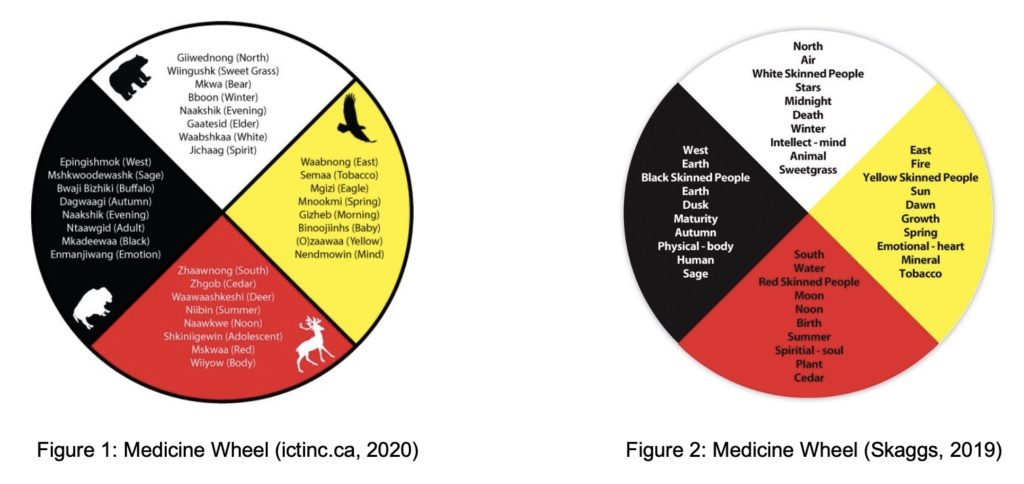
Herbalism, although initially seen to treat the body, could also be used to treat all three parts of the complex, due to the diverse scope of ailments they were able to cure. For example, the Native American tribes found hops to be as effective at treating mental anxiety, as it was for treating ulcers and indigestion (59, Shimer). The simple practice of partaking in the harvesting of herbs could also restore the soul by reconnecting the bond with nature.
Biological Diversity
Already prolific in the herbal healing arts, Native American practices were further expanded due to the biological diversity of plant life in the United States. Accounts vary, but some estimate that Native Americans had amassed a significant collection of herbs, said to be in the hundreds, which they utilised within treatment. They developed their skill set and knowledge primarily through experimentation, which although risky certainly allowed them to ascertain the benefits and side effects of each plant. A more productive and perhaps less perilous alternative was to observe their animal counterparts. This allowed them to see which plants the animals avoided and which plants they used as “if that herb worked for an animal, it might work for a human too” (Chicoke). This methodology was again, tied into their view of the cosmos and all life being unified as one as reestablishing balance with nature and they were correct in their interpretation. The plants they used to heal, were imbued with the same minerals and vitamins that built and sustained the body.
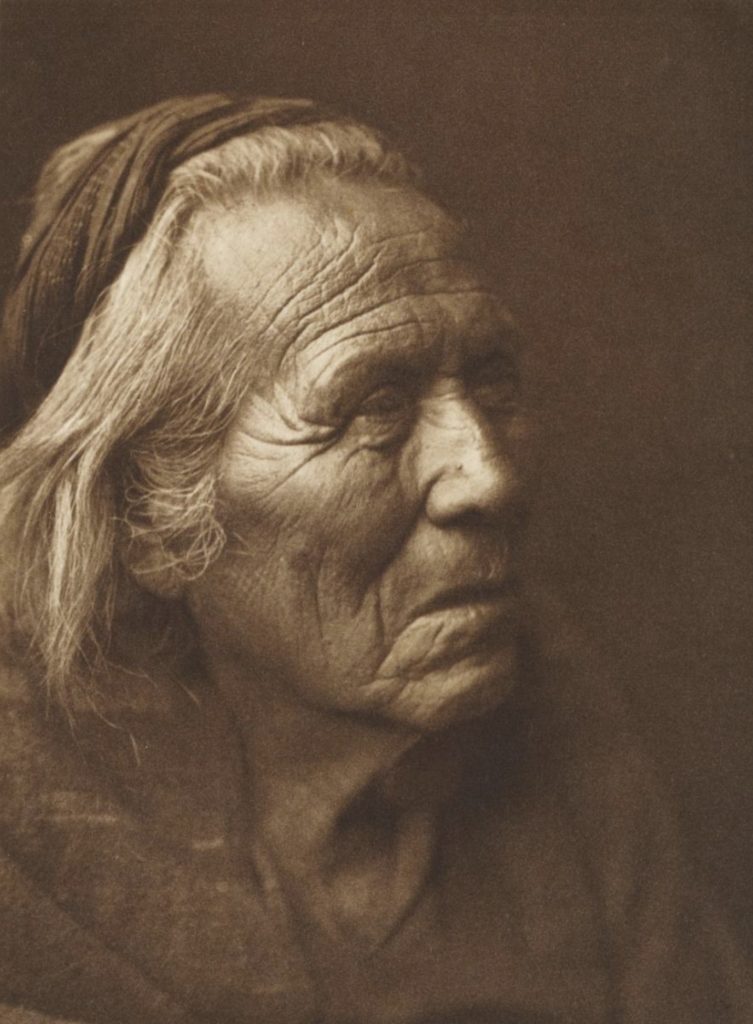
The Role of the Shaman or Medicine Man
Although accounts vary from tribe to tribe, the role of the shaman was seen to be a mostly male role as they were often referred to as “medicine men” (7, Cohen). However, women also had responsibilities within the community and often “collected herbs as medicine women or the wives of medicine men” (1, Vemireddy). As this was a mixed gender practice, traditions and knowledge of herbalism were passed down orally and also practically, from generation to generation. A fundamental knowledge of gathering and identification was provided to family members for practical, everyday home herbalism but also to help establish a “special connection with nature” (1, Vemireddy). The healing role of shaman was incredibly specialized as they had to assimilate a phenomenal compendium of knowledge which included the ceremonial practices, plant identification, harvesting and processing/application for disease and injury. This knowledge had to be used responsibly, wisely and intuitively so as not to disturb universal law, create imbalance or anger and attract negative spirits. Consequently, students were carefully selected and then trained practically and orally, as no written records were kept.
The Materia Medica of Native American Tribes
The Materia Medica for Native American healing was vast, but there was a core selection of plants that were used regularly, which included: Aloe, Black Cohosh, Dandelion, Echinacea, Fennel, Ginseng, Goldenseal, Goldenrod, Hops, Lady’s Slipper, Mullein, Nettle, Oats, Peppermint, Pine, Raspberry, Valerian, Wormwood and Yarrow (5, 6, Shimer). This small selection of herbs demonstrates the effectiveness of their practices, as they are still widely used today. All parts of the plant, from leaves to roots, would be utilized as much as possible as nothing was to be wasted.
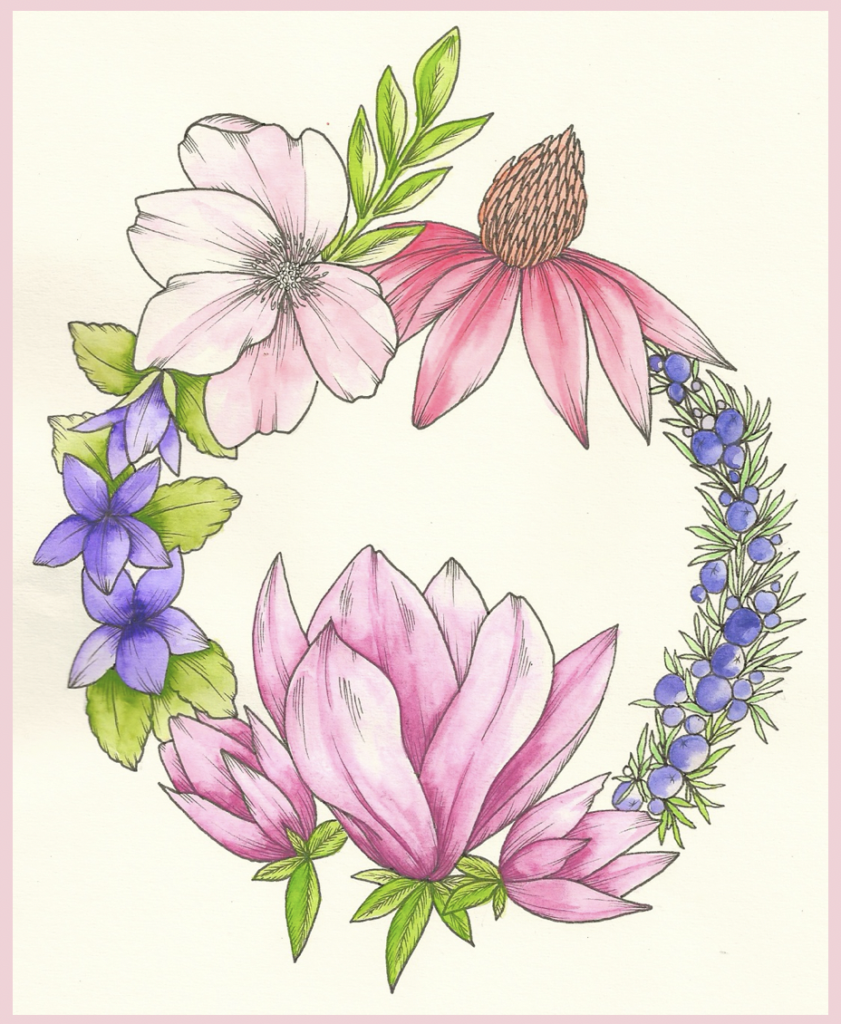
Harvesting
As the Native American relationship to the plant world was deeply respectful, certain rules were observed during harvesting as it was viewed as a deeply spiritual practice and a ritual of gratitude to the Great Spirit. There were strict rules to this tradition as “some areas have been picked for thousands of years by the same clan members” (12, Cichoke) so “you should never pick in someone else’s picking place” (12, Cichoke). Ceremonial dress was a requisite for some as it was seen to honour God, nature and the ancestral spirits and many groups would start and end the harvesting ceremony with prayers of thanks.
Seeking Permission
After ceremonial traditions were completed harvesting would begin and plants would be selected for medicinal cultivation. When selecting a plant, the picker would sit in meditation communicating psychically and requesting permission from the plant to be used. The answer of the plant was sensed through an “intuitive feeling’ (11, Cichoke) and if a positive confirmation was given the plant was picked. The next stage of harvesting was to take only what was needed and not deplete the environment through greed, which was important as it allowed the plant to replenish itself and keep providing for those around it. To complete the energetic circle of give and take, a gift was then left in thanks.
Preparing and Storing Herbs
Plants were “picked early in the morning” (11, Cichoke) for maximum medicinal effectiveness and then processed depending on the type of usage. For example, Aloe Vera is a topical herb used to treat skin problems such as eczema, burns and bites. To treat the patient, the Aloe can be used immediately by stripping the outer covering and applying the gel within as a “cooling, healing salve” (40, Cichoke). As Aloe is difficult to store it is best utilized only when needed.
Herbs such as nettle and peppermint would be dried to use in teas or as a powder, which meant they need to be cleaned then hung in bunches to dry. Typically, this would take many days so that all the moisture was fully extracted from the plants. This was important as any residue would make the herbs susceptible to mold or other forms of deterioration. Drying of herbs and plants allowed them to be kept and stored for a longer period of time.
Herbs used in tinctures would be processed immediately. Mixed into a pot or jar with alcohol, they were kept in a dark place and shaken daily to strengthen the infusion and increase the permeation of the potent herbal properties. After a period of approximately 6 weeks, they were strained and decanted into a vessel to be used daily or as recommended by a shaman.
Herbs used in poultices could either be fresh or dried depending on the diagnosis and would have to be “boiled or steeped’ (15, Cichoke) as they needed to be moist for application.
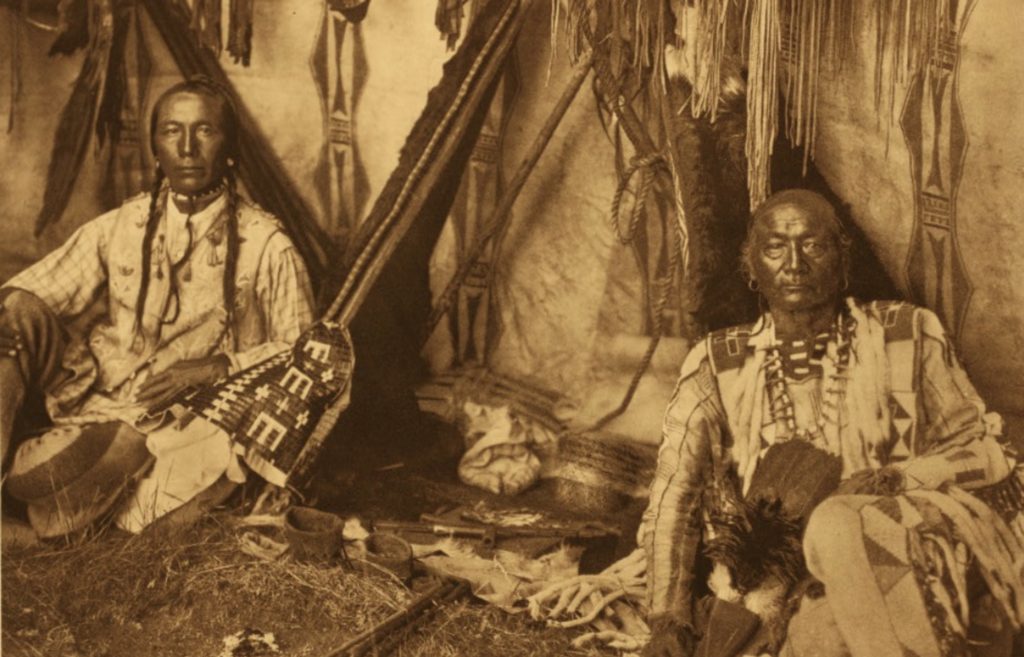
Ceremonial Use of Herbs
These were the most common applications of herbalism but they were also used in other ceremonial practices, the most important of these being the sweat lodge or spa. The sweat lodge spa was by no means viewed as the luxury it is today and instead was seen as a symbolic practice which detoxed their body while representing “a form of rebirth from the womb” (28, Shimer). Herbal plants were placed on the hot rocks within the lodge, which infused the steam and aided in the healing detox. For individuals with chronic cases a smaller scale version was used and comprised of a kettle, water and a blanket.
Pipe smoking also used a complex mix of herbs and plants, instead of tobacco. This was a deeply spiritual ceremony as the herbs and smoke were “used to carry prayers up to the creator” (338, Rybak, Decker-Fitts) while also aiding in a detoxification of the physical system.
Smudging was also a popular practice and one which has remained within mainstream spirituality to this day. Sage was the most popular herb and was used in conjunction with Cedar. The smoke from the smudging tool was used to “dispel any negative energies” (337, Rybek, Decker-Fitts) and entities and was used to “facilitate the healing process” (337, Rybek, Decker-Fitts) by permanently evicting the usurper.
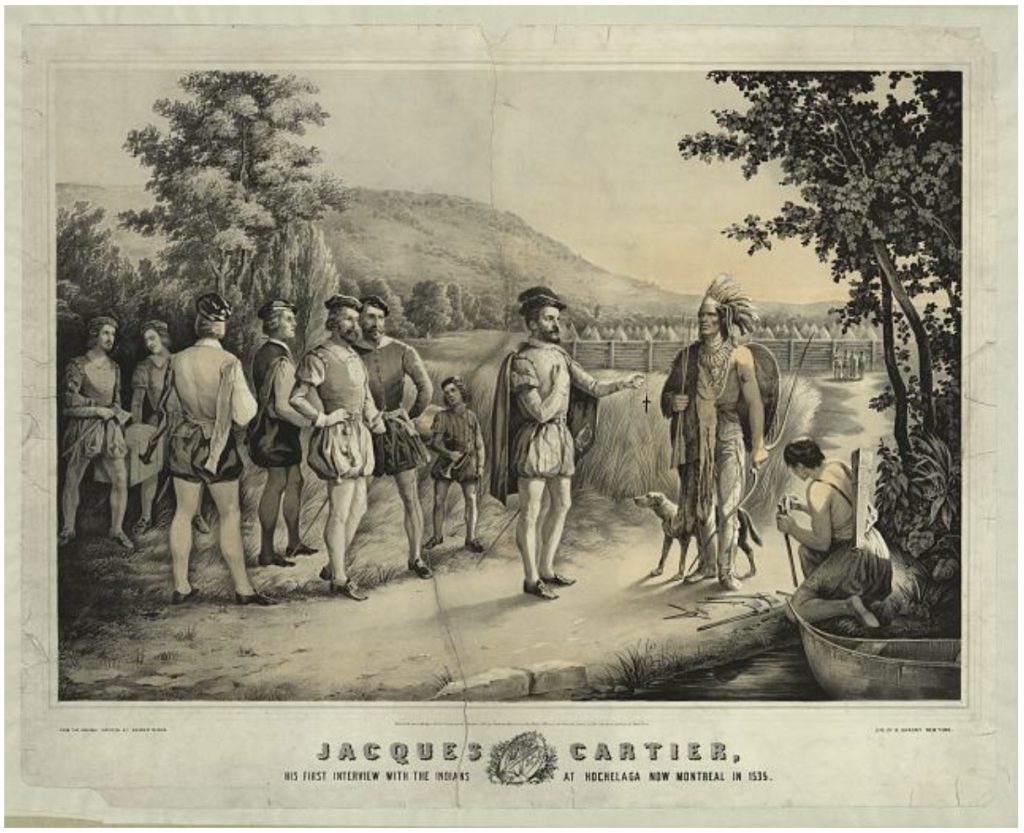
Invasion from Europe
Sadly, many of these practices have fallen out of use due to the persecution and dissolution of the native tribes by the western colonizers. Columbus’ discovery of America brought with it not only a physical threat but the peril of new and unknown diseases as the Native American tribes were besieged on all fronts. Physically through war and disease and the loss of their healing practices, emotionally through death and the loss of community and traditions and spiritually through the decimation of their lands, connection to god and the new secular religions. The civilized invaders were ignorant, prejudiced and conditioned by the limitations of their religious beliefs which told man to fear god instead of revering and respecting him and all forms of his creation. The gentle healing practices of these noble indigenous people were demonized and their “shamans were seen as evil, and we entered a witch burning phase of our history” (15, Lyon).
While many have endeavoured to keep the traditional practices of their people alive, most succumbed to modern western health practices which became more prevalent. The belief in the superiority of allopathic medicine has failed it patients as the health of many tribespeople has deteriorated markedly. Writer Rachel Vemireddy cites that “Indigenous people have some of the worst health disparities in the United States and this is directly linked to colonisation” (1, Vemireddy).
Impact on Native American Health from Colonisation and Western Diet
Opioid use, alcohol addiction, suicide and depression are highly prevalent as is diabetes which “runs rampant through many tribes” (1, Koithan, Farrell). Prior to this there was little to no traces of the disease within tribespeople, but the encroachment of standardised American diets has changed this dramatically. Ironically some treatments for these problems involve “the inclusion of family and community in treatment plans” (1, Koithan, Farrell) a concept which was originally a highly valued traditional practice. However, despite both indigenous and modern ideologies being at odds with each other some practices are having a resurgence as “native herbal remedies and allopathic medications are used side by side” (1, Koithan, Farrell).
Moving forward, as territory, artifacts and traditions are restored to the indigenous Native American people, one can only hope that they are once again able to establish harmony, health and peace with the land and spirits they so dearly love.
Bibliography
Books
Cichoke, A, J. (2001). Secrets of native American Herbal Remedies: A comprehensive guide to the Native American Tradition of using herbs and the mind/body/soul connection for improving health and well-being. New York. Penguin Publishing Group
Cohen, K. (2006). Honoring the Medicine: The Essential Guide to Native American Healing. New York: Ballentine Books
Lyon, W. (2020). North American Indian Medicine Powers: Spirit Talkers. Newcastle- upon-Tyne: Cambridge Scholars Publishing
Shimer, P. (1999). Healing Secrets of the Native Americans: Herbs, Remedies and Practices that restore the body, refresh the mind and rebuild the spirit. New York: Black Dog and Leventhal Publishers, Inc
Websites
Koithan, M. & Farrell, C. (2011). Indigenous Native American healing traditions. [online] Available at: https://www.ncbi.nlm.nih.gov/pmc/articles/PMC2913884/
Vemireddy, R. (2020). The role of Native American healing traditions within Allopathic medicine. [online] Available at: http://www.inquiriesjournal.com/articles/1849/the-role-of- native-american-healing-tradiions-within-allopathic-medicine
Rybak,C. & Decker-Fitts, A. (2009). Understanding Native American Healing Practices. [online] Available at: https://my.enmu.edu/c/document_library/get_file?uuid=50927632- e6c2-4470-86af-ea34dc5ea5d1&groupld=415305&filename=sbrybak-nur417.pdf